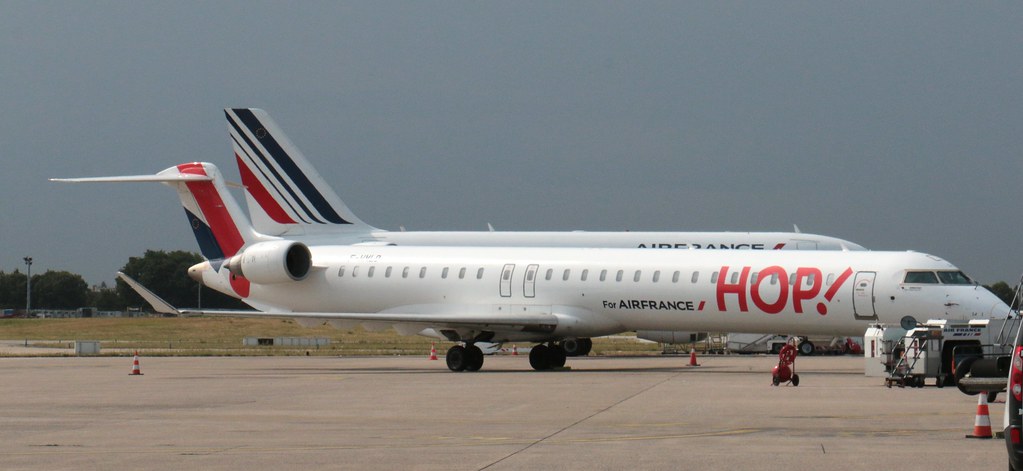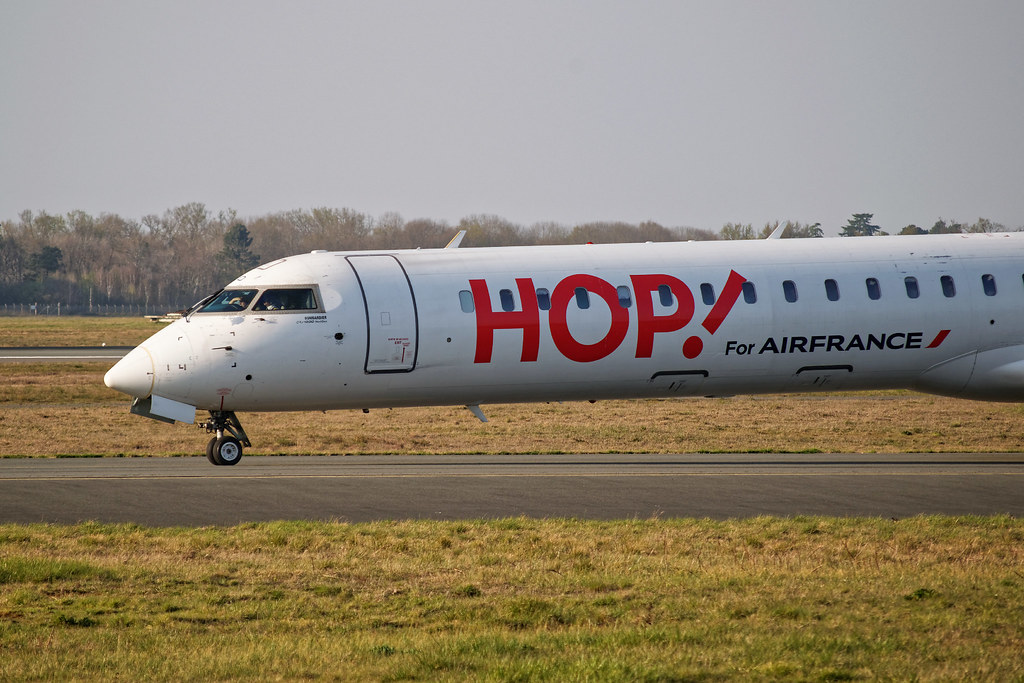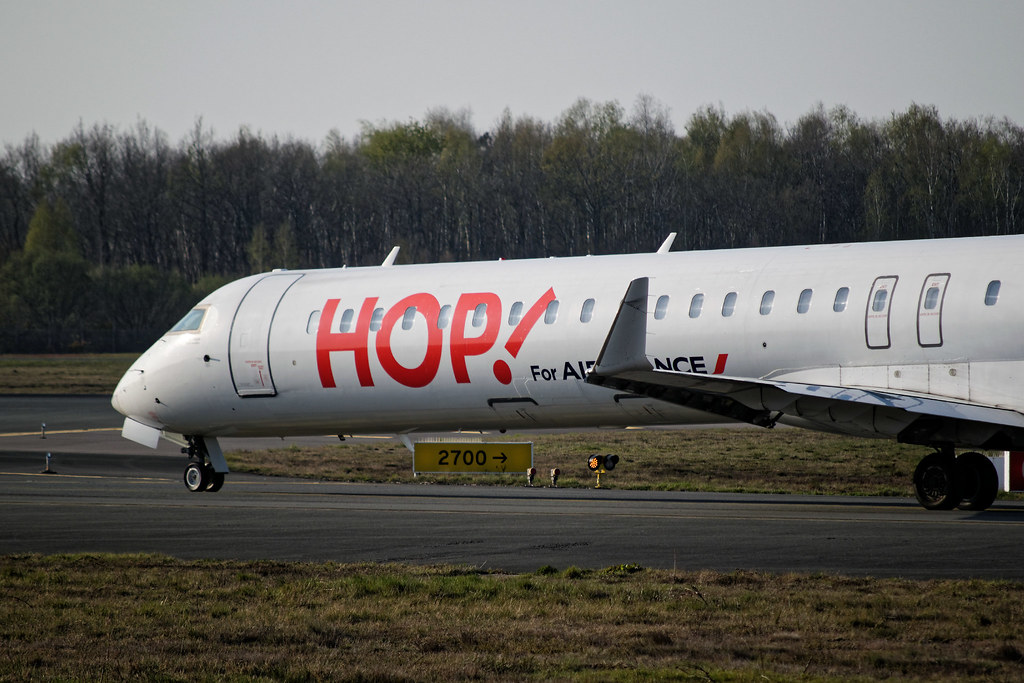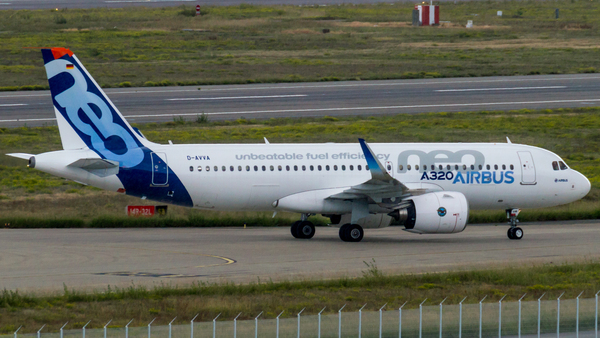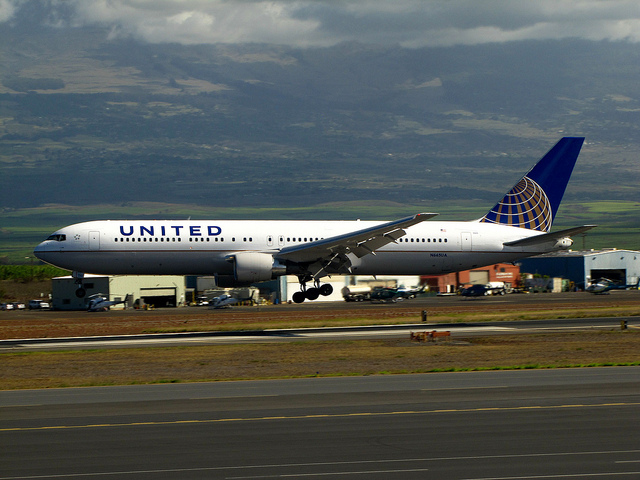Hop! CRJX at Nantes on Oct 20th 2021, wrong QNH triggers MSAW
Last Update: March 31, 2023 / 13:50:26 GMT/Zulu time
Incident Facts
Date of incident
Oct 20, 2021
Classification
Incident
Flight number
AF-1632
Departure
Lyon, France
Destination
Nantes, France
Aircraft Registration
F-HMLD
Aircraft Type
BOMBARDIER Regional Jet CRJ-1000
ICAO Type Designator
CRJX
Airport ICAO Code
LFRS
The French BEA rated the occurrence a serious incident and opened an investigation.
On Mar 31st 2023 the BEA released their final report concluding the probable causes of the serious incident were:
The following factors may have contributed to the altimeter setting error:
- a high workload and the F-HMLD crew being excessively focused on the weather conditions associated with the ongoing storm, to the detriment of the application of the standard procedure, which included checking the consistency of the QNH value provided by the ATC against another source of information;
- the APP controller being distracted due to an imminent conflict in another sector of his area of responsibility for which he was preparing the resolution. As a consequence, the controller did not identify that the crew incorrectly read back the altimeter setting.
The following factors may have contributed to the non-detection of the erroneous final path:
- the inherent limitations of the Baro-VNAV function in the event of an altimeter setting error;
- the absence of appropriate safety measures in such situations - in particular, the “consistency check” procedure based on the radio altimeter value appears to be ineffective given the operational context at this point of the flight;
- the controller’s radar display using the standard altimeter reference to indicate the aircraft altitudes.
The following factors may have contributed to the reaction time to the MSAW:
- the QNH not being mentioned when the controller conveyed the warning;
- the word “immediately” not being used in the controller’s warning message;
- the surprise effect experienced by the crew.
The BEA summarized the scenario:
When the crew of F-HMLD were cleared to descend to the first altitude below the transition level and to conduct the approach to runway 21, the PM incorrectly read back the QNH, indicating an altimeter setting of 1021 instead of 1002. This error was not detected by the controller or the PF. When resetting the altimeter, the crew did not apply the procedure fully, omitting to check the consistency of the QNH provided by the controller against another source of information because of the turbulence experienced during this phase of flight, which was making it difficult for the crew to read the information written on the flight plan.
Due to this QNH error, the aircraft’s path during the approach was approximately 530 ft lower than the published path. However, the procedures and information on the aircraft instruments did not allow the crew to directly identify the path error in a simple way.
The only instrument information that could have allowed the crew to detect this QNH error was the radio altimeter value, which was abnormally low compared to the procedure altitudes, taking into account the altitude of the area overflown. This check was not clearly defined by the standard operating procedures.
The altitude displayed on the radar display, which is a standard altitude, did not allow the controller to easily detect that the aeroplane was not flying the intermediate approach at the published altitude. Moreover, it was not the responsibility of the controller to carry out this check.
The final descent path checks carried out during a RNP Baro-VNAV approach do not enable the crew to detect a path error due to an altimeter setting error. This limitation inherent to RNP Baro-VNAV approaches is a well-known threat, which pilots are regularly reminded of by the operator during their recurrent training or through internal flight safety documents.
As the aircraft was approaching the missed approach point, a MSAW triggered at the LOC controller’s position. The controller informed the crew of this warning, without initially reminding them of the QNH and without using the word “immediately” in the message. Exchanges between the crew and the controller lasted almost 30 s before the crew realised their mistake and corrected the vertical path.
The crew did not perform a go-around as required by the MSAW procedure described in the operations manual. As they had sight of the runway and were aware of bad weather conditions on the missed approach path, they considered it more judicious to continue the approach.
According to the stabilisation criteria, the approach was not stabilised. During the final approach, due to the inherent limitations of the Baro-VNAV function in the event of an altimeter setting error, the crew could not gain awareness of this destabilisation. The crew were only able to perceive this destabilisation on the triggering of the MSAW.
Metars:
LFRS 201930Z AUTO 24019G30KT 210V270 9999 FEW039 BKN078 OVC094 14/10 Q1003 TEMPO 25030G55KT 2000 +SHRA SCT012 BKN020CB=
LFRS 201900Z AUTO 25019G33KT 210V270 9999 FEW017/// SCT026/// BKN056/// ///TCU 14/12 Q1003 TEMPO 25030G55KT 2000 +SHRA SCT012 BKN020CB=
LFRS 201830Z AUTO 24019G34KT 210V270 6000 -RA SCT014/// BKN028/// BKN038/// ///CB 14/12 Q1003 TEMPO 25030G55KT 2000 +SHRA=
LFRS 201800Z AUTO 21027G41KT 5000 -RA BR BKN022/// OVC028/// ///CB 17/15 Q1002 TEMPO 24030G60KT 2000 +SHRA=
LFRS 201730Z AUTO 21024G42KT 9999 BKN024/// OVC036/// ///TCU 18/14 Q1002 TEMPO 24030G60KT 2000 +SHRA SCT012 BKN020CB=
LFRS 201700Z AUTO 21022G37KT 9999 OVC021 18/14 Q1003 TEMPO 24025G55KT 2000 +SHRA BKN012 BKN020CB=
LFRS 201630Z AUTO 21020G31KT 9999 OVC020 18/15 Q1005 TEMPO 24025G55KT 2000 +SHRA BKN012 BKN020CB=
LFRS 201600Z AUTO 21019KT 9999 BKN019 OVC025 18/14 Q1005 TEMPO 24025G55KT 2000 +SHRA BKN012 BKN020CB=
LFRS 201530Z AUTO 21016KT 190V250 9999 BKN020 BKN027 BKN140 18/14 Q1006 TEMPO 24025G55KT 2000 +SHRA BKN012 BKN020CB=
LFRS 201500Z AUTO 21016KT 9999 BKN023 BKN028 OVC170 19/14 Q1007 TEMPO 4000 SHRA BKN014TCU BECMG 23015G30KT=
LFRS 201430Z AUTO 21016KT 9999 BKN025 BKN032 BKN170 19/14 Q1008 TEMPO 4000 SHRA BKN014TCU BECMG 23015G30KT=
LFRS 201400Z AUTO 22015KT 190V270 9999 BKN025 BKN030 BKN035 20/15 Q1008 TEMPO 4000 SHRA BKN014TCU BECMG 23015G30KT=
Incident Facts
Date of incident
Oct 20, 2021
Classification
Incident
Flight number
AF-1632
Departure
Lyon, France
Destination
Nantes, France
Aircraft Registration
F-HMLD
Aircraft Type
BOMBARDIER Regional Jet CRJ-1000
ICAO Type Designator
CRJX
Airport ICAO Code
LFRS
This article is published under license from Avherald.com. © of text by Avherald.com.
Article source
You can read 2 more free articles without a subscription.
Subscribe now and continue reading without any limits!
Read unlimited articles and receive our daily update briefing. Gain better insights into what is happening in commercial aviation safety.
Send tip
Support AeroInside by sending a small tip amount.
Newest articles
India A20N at Delhi on Nov 27th 2025, cargo smoke indication
An Air India Airbus A320-200N, registration VT-EXO performing flight AI-2939 from Delhi to Ahmedabad (India) with 170 people on board, was climbing…
United B763 near Boston on Nov 27th 2025, airspeed indication problem
A United Boeing 767-300, registration N665UA performing flight UA-934 from Newark,NJ (USA) to London Heathrow,EN (UK), was enroute at FL300 near…
Subscribe today
Are you researching aviation incidents? Get access to AeroInside Insights, unlimited read access and receive the daily newsletter.
Pick your plan and subscribePartner

ELITE Simulation Solutions is a leading global provider of Flight Simulation Training Devices, IFR training software as well as flight controls and related services. Find out more.
SafetyScan Pro provides streamlined access to thousands of aviation accident reports. Tailored for your safety management efforts. Book your demo today
AeroInside Blog
Popular aircraft
Airbus A320Boeing 737-800
Boeing 737-800 MAX
Popular airlines
American AirlinesUnited
Delta
Air Canada
Lufthansa
British Airways

